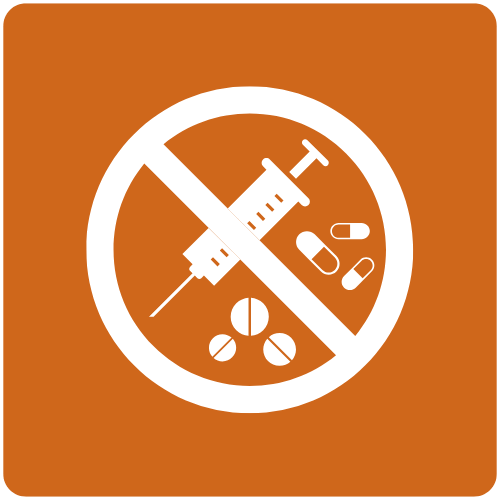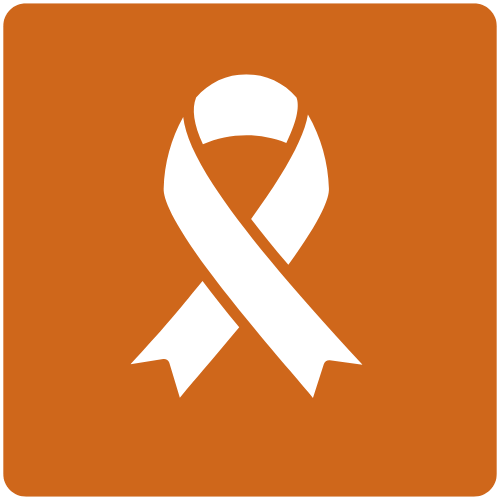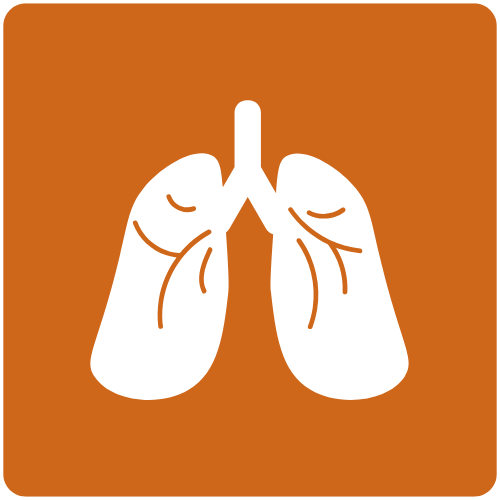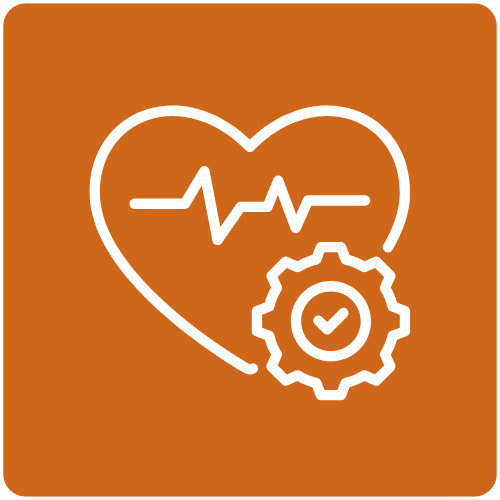
Lebanon community
The Lebanon Community includes Camden, Dallas, Laclede, Pulaski, Texas and Wright counties in Missouri.

PART 1: INTRODUCTION
Executive Summary
Since 2016, hospital systems, local public health agencies (LPHAs) and other healthcare partners in the greater Ozarks have worked together to release comprehensive Community Health Needs Assessments (CHNAs) every three years. This group, known as the Ozarks Health Commission (OHC), released community-level reports in 2016, 2019 and 2022. For the fourth iteration, the 2025 assessment has been compiled into community-level and regional snapshots, continuing the regional scope introduced in 2022.
Health care partners and LPHAs develop the results of these assessments into Community Health Improvement Plans (CHIPs). Organizations use CHIPs to target areas of health need and disparity in communities and create actionable plans to make them better over time.
The scope of the OHC region includes 33 counties across three states. These counties make up seven different communities, who each develop reports based on their community-level data. Information about data collection can be found in the OHC Regional Report.
The following is the 2025 Lebanon Community CHNA. This report aims to be a valuable resource for health care partners, civic organizations and people who live, work and seek health care in the Lebanon Community.

Service Area
The Lebanon Community includes Camden, Dallas, Laclede, Pulaski, Texas and Wright counties in Missouri. It encompasses the service areas of Mercy Hospital Lebanon, Citizen’s Memorial Hospital, Lake Regional Hospital, Camden County Health Department, Dallas County Health Department, Laclede County Health Department, Pulaski County Health Center, Texas County Health Department and Wright County Health Department.
The six-county Lebanon Community is home to 193,486 individuals. The area includes military training bases, rural communities, small townships, a national forest and eight cities, including Lebanon, Waynesville, Houston, Cabool, Mansfield, Hartville, Buffalo and Camdenton. Lebanon is the Crossroads of the Ozarks, home to over 15,000 residents.

Population overview
The Lebanon Community population is roughly evenly split between men and women. 36% of the population live in urban areas, while 64% live in rural areas. All counties in the Lebanon Community except for Pulaski County are classified as more than 50% rural.
Of the total population in the Lebanon Community, 22% are under the age of 18, 59% are between the ages of 18-64, and 19% are age 65 or older.
Most Lebanon Community residents (86%) identify as non-Hispanic White. Just over 3% identify as non-Hispanic Black. About 5% of residents identify as Hispanic or Latino. Roughly 1% identify as non-Hispanic Asian and 4% identify as non-Hispanic multiple races.

Population by age

Population by race and ethnicity

Rural vs. urban population

Populations of interest
Approximately 20% of the total civilian population is living with a disability, which is higher than the regional rate at 17% and national rate of 13%. This may contribute to access to care and disparities among community members with a disability. In Texas County, one in four residents is living with a disability.


PART 2: Areas of focus

PART 2: Areas of focus
For the 2025 iteration of the CHNA, the Lebanon Community chose to focus in-depth on two areas of focus: Mental health and heart health. These two health issues rose to the top of the priority list due to prevalence and affected populations.
Each area of focus will dive into specific conditions and the populations in Lebanon Community who are most affected.

Mental health

Heart health

Other areas of interest
Mental health
Mental health is a continued issue in the Lebanon Community. It is a priority issue that is reflected among the entire OHC region. One in five community members reported needing mental health care but were unable to get it. Community members most often cited scheduling difficulties, finances and insurance issues as their largest barriers to accessing mental health care.

Substance use

Suicide mortality

Suicide mortality
The Lebanon Community’s suicide mortality rate is greater than the OHC region and the state. Each year nearly 40 people die by suicide. Men in the Lebanon Community are 5 times more likely to die by suicide.
Heart health

heart Disease Mortality

Physical Activity

Nutrition
Heart disease mortality
Poor heart health is the leading cause of death for those living in the Lebanon Community. While these conditions are often associated with the elderly population, the effects can be felt much earlier. Often, root causes such as nutrition and physical activity result in poor heart health. Heart disease mortality in the Lebanon Community is higher than the state.
Physical activity
Exercise is vital for overall health. Lack of physical activity or access to exercise opportunities can lead to negative health outcomes, including poor mental and heart health. One in five residents report that they have not been physically active within the last 12 months. Additionally, two in five residents do not have access to exercise opportunities.
Nutrition
A healthy and balanced diet is another factor that affects heart health. In adults, eating healthy foods can help maintain a healthy weight and lower the risk of heart disease, type 2 diabetes and some cancers.¹
The rate of food insecurity in the Lebanon Community sits higher than the OHC region and the state. Of concern, childhood food insecurity is also higher than the OHC region and the state. One in five community members reported not regularly eating healthy foods in the last 12 months. Community members most often cited finances, interest and time as their largest barriers to eating healthy foods.

Other areas of interest
In addition to areas of focus for the Lebanon Community, other conditions have been identified as areas of interest. These are public health issues for this community but are not an area of focus for this assessment. They are included to provide a broad snapshot of other conditions that affect the Lebanon Community.

Cancer

respiratory illness

Access to care
Cancer
In the Lebanon Community, cancer is the second leading cause of death. When considering all cancers, around 450 people in the Lebanon Community lose their life each year to cancer.
Colon and rectum cancer rates are 40 per 100,000 adults. This number is higher than the OHC region at 39.2 per 100,000 adults. These high rates may be associated with lack of preventative screening. One in three people aged 50-75 do not receive adequate colorectal cancer screening.
Lung cancer rates are 71.6 per 100,000 people. This number is higher than the OHC region (64.1 per 100,000) and the state (68.1 per 100,000). It is also the highest rate across all seven communities within the OHC region. Lung cancer is often, but not always, associated with a history of smoking or tobacco exposure.


Respiratory illness
Chronic lung conditions including chronic obstructive pulmonary disease (COPD) are incurable and cause mild to severe breathing difficulties. The conditions may co-occur with other chronic ailments and contribute to poor health outcomes. COPD is often, but not always, associated with a history of smoking or tobacco exposure. Mortality rates due to COPD are higher in the Lebanon Community (64 per 100,000) than both the OHC region (55 per 100,000) and the state (47 per 100,000).
Some communicable diseases are respiratory illnesses—such as influenza and pneumonia. Both influenza and pneumonia are especially dangerous for infants, young children, elderly people and people with pre-existing health conditions. Deaths due to pneumonia and influenza are slightly higher in the Lebanon Community than in the OHC region and the state.
Access to care
Each person’s health and healthcare path is different, but there are certain root causes that can contribute to poor health outcomes. Things like access to medical care, financial stability and stigma toward certain conditions can prevent a person from taking preventative actions for their health, seeking care or changing their lifestyle.
Portions of the Lebanon Community are classified as a primary care health professional shortage area (HPSA). Almost two in five residents live in a HPSA. In Texas and Wright counties, over half of residents live in a HPSA. One in four resident adults have not had a routine medical checkup in the past year. Significantly, one in three community members reported needing health care but were unable to get it. Community members most often cited scheduling difficulties, finances and insurance issues as their largest barriers to accessing health care.
“[It’s] very hard to get into anywhere that’s accepting new patients within my health system.”
– Lebanon Community member

PART 3: Closing Remarks

Conclusion
While this overview of health in the Lebanon Community is not comprehensive, it gives an important glimpse into areas of concern reflected in both data and community feedback. The 2025 assessment will be used to inform public health and health care initiatives. These initiatives will be outlined in a forthcoming Community Health Improvement Plan.
Dissemination
The OHC regional report and all community-level reports are available to the public through various channels
Websites
Printed copies
Printed copies will be available by request through health care partners and LPHAs. Please refer to organization websites or contact an organization directly
Social media
Mercy Hospital Lebanon
Health services available
Camden County Health Department
Citizens Memorial Hospital
Dallas County Health Department
Jordan Valley Community Health Center
jordanvalley.org/request-an-appointment/
Laclede County Health Department
Lake Regional Hospital
Mercy
Stone County Health Department
stonecountyhealthdepartment.com
Taney County Health Department

AckNowledgements
Thank you to Lebanon Community partners and residents for contributing to this assessment through your feedback. Your contributions provide rich context to the vast health care data compiled for this report.
Thank you to the OHC Steering Committee for your collaboration and resource sharing during every step of the CHNA process.
Thank you to the Lebanon Community representatives in the OHC Steering Committee for your contributions toward data collection and creation of the report.
Citations
¹ “Benefits of Healthy Eating for Adults.” Centers for Disease Control and Prevention. Last modified February 14, 2024. https://www.cdc.gov/nutrition/php/resources/healthy-eating-benefits-for-adults.html.
The substance use provider to patient ratio is drastically lower (2 per 100,000) as compared to the OHC region (17 per 100,000).
Men in the Lebanon Community are 5 times more likely to die by suicide.

